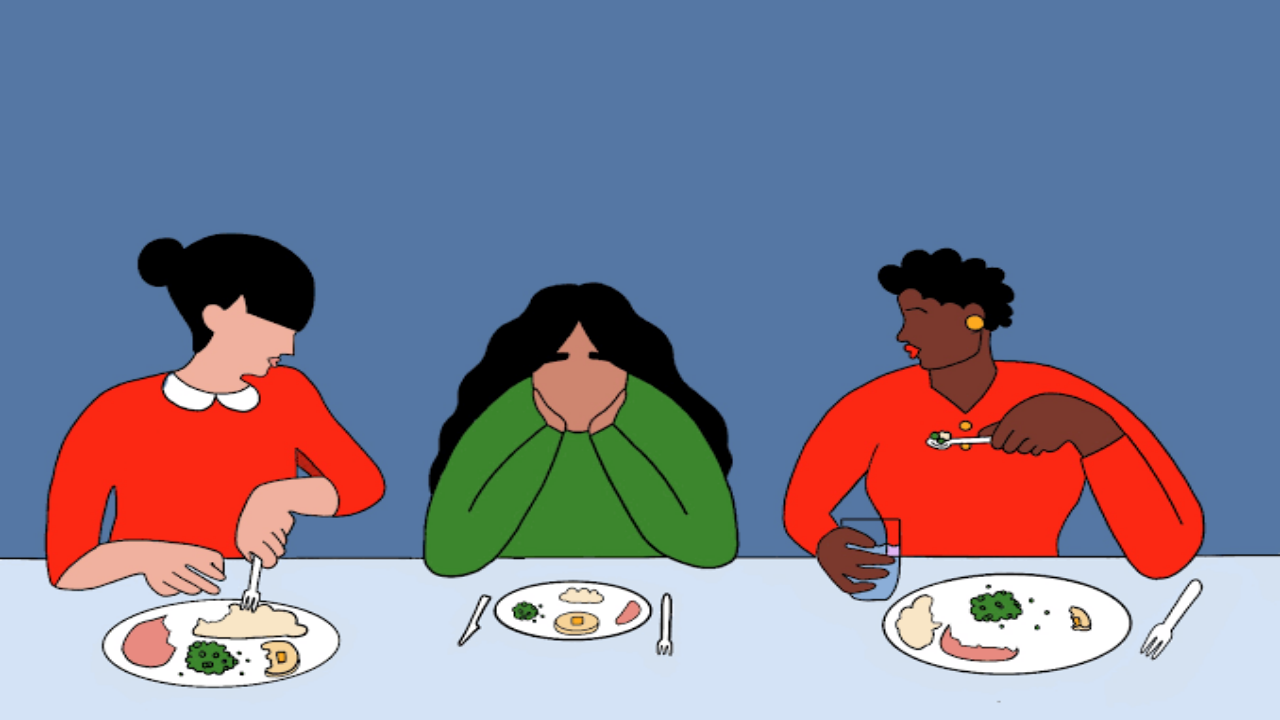

Eating disorders are significant mental illnesses that afflict people of all ages, genders, ethnic backgrounds, and socioeconomic statuses. Eating disorders patients utilize disordered eating as a coping mechanism for stressful conditions or feelings. Limiting the amount of food consumed, eating big quantities of food at once, getting rid of the food consumed by harmful means, or a combination of these behaviors are examples of this behavior.
It’s crucial to remember that eating disorders aren’t just about food; they’re also about emotions. Though they may not realize it, the way the person treats food may make them feel more capable or in control, even if they are unaware of the objective of their behavior. An eating disorder is never the fault of the person suffering from it, and everyone suffering from one deserves prompt, compassionate help in order to recover.
Anorexia (or anorexia nervosa) is a serious mental condition in which persons lose weight by restricting their food and drink intake. They may establish “rules” for what they believe they can and cannot eat, as well as when and where they will consume. Anyone of any age, gender, ethnicity, or background can be affected by anorexia.
They may undertake a lot of exercise, get sick, or use laxatives to get rid of the food they ate, in addition to reducing how much they eat. Bingeing and purging cycles may occur in some people with anorexia.
ARFID, or Avoidant Restrictive Food Intake Disorder, is a condition in which a person avoids or restricts particular foods or categories of foods or both.
For a variety of reasons, someone may avoid or restrict their intake. They may be extremely sensitive to the taste, texture, fragrance, or appearance of certain foods, or they may only be able to eat certain foods at specific temperatures. This may result in sensory avoidance or intake restriction.
Binge Eating Disorder (BED) is a dangerous mental disease in which people consume excessive amounts of food without feeling in control of their actions. Anyone of any age, gender, ethnicity, or background can be affected, and data suggests it is more widespread than other eating disorders.
People who suffer from binge eating disorders consume significant amounts of food in a short period of time (called binge eating).
Bulimia (also known as bulimia nervosa) is a serious eating disorder. Anyone, regardless of age, gender, nationality, or background, can be affected. Bulimia sufferers are trapped in a loop of bingeing (eating a lot of food) and then trying to compensate by vomiting, using laxatives or diuretics, fasting, or exercising excessively (called purging). The best chance for a quick and long-term recovery from bulimia is to begin treatment as soon as feasible.
Orthorexia is a disorder characterized by an obsessive fixation with eating “pure” foods. The definition of “pure” and “impure” food varies from person to person. This isn’t to say that anybody who follows a healthy diet or eating plan is suffering from orthorexia. The eating behavior — in this example, “healthy” or “clean” eating – is used to cope with negative thoughts and feelings, or to feel in control, as with other eating disorders. If they eat food they believe is unhealthy, someone who uses food in this way may feel highly nervous or guilty.
OSFED is the most common type of eating disorder, affecting people of all ages, genders, ethnicities, and backgrounds. It’s just as dangerous as anorexia, bulimia, or binge eating disorder, and it can grow from or transform into another condition. OSFED sufferers, like everyone else with an eating disorder, require and deserve therapy.
7. Pica
Pica is a type of eating problem in which a person consumes non-nutritive items such as paper, soap, paint, chalk, or ice. Pica must be present for at least one month, not be part of a cultural practice, and be developmentally inappropriate – it is not usually diagnosed in children under the age of two because it is common for babies to “mouth” objects, which can lead to them accidentally eating substances that aren’t meant to be eaten.
Pica is frequently misdiagnosed until it causes medical problems, such as metal toxicity, fractured teeth, or infections.
Rumination disorder is a mental condition characterized by the coming up of partially digested meals on a regular basis. It frequently happens without effort or discomfort, and it is not connected with nausea or disgust.
Rumination disorder can strike people of all ages. The person can either chew and swallow the food again or simply spit it out. People who suffer from rumination disorder frequently do not feel in control of their condition.
Keep reading successyeti.com
Also Read: Tips To Find Your Unknown Self
In today's article, we will learn the importance of happiness and how to maintain it…
Today, we will look at three common mistakes couples make in their relationships regarding intimacy…
In this article, we will learn about the simple ways that can help one overcome…
Check out the list of couples' biggest relationship mistakes in this article.
In this article, we will learn about anxiety and how one can handle it in…
In this article, you will understand the horrifying effects of child abuse.